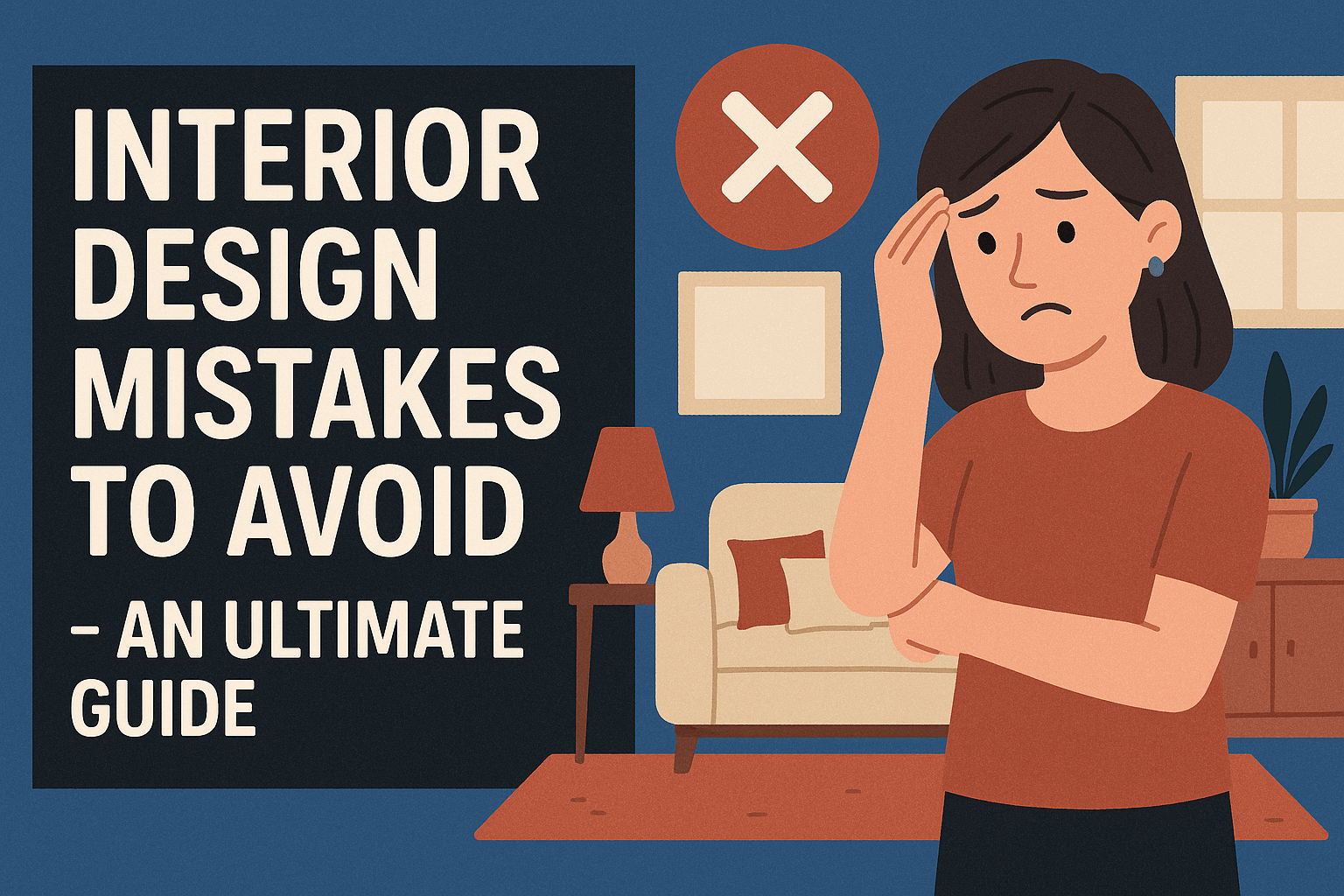Designing the interior of a home or commercial space is an exciting process. From choosing colors and materials to selecting furniture and décor, every decision shapes the atmosphere and functionality of the environment. However, even well-intentioned design choices can lead to costly or frustrating outcomes if certain common pitfalls aren’t avoided.
A thoughtful design doesn’t just look beautiful—it also makes a space comfortable, efficient, and aligned with its purpose. Let’s explore the interior design mistakes that are most frequently made—and how to avoid them like a pro.
1. Ignoring the Function of the Space
Form should follow function. One of the most common mistakes is prioritizing aesthetics over how a room will actually be used. A living room that looks stunning in photos might feel awkward and unusable if it lacks seating or flow.
Ask Before You Design:
- Who will use this space on a daily basis?
- What activities happen here?
- Does the layout support those activities?
Failing to answer these questions often leads to beautiful, yet impractical, interiors.
2. Skipping a Cohesive Color Palette
A home with clashing colors in every room feels chaotic. It’s tempting to experiment with trendy shades, but without a unified palette, the result can be jarring rather than exciting.
Instead:
- Choose a base palette of 2–3 neutral tones
- Add pops of color through accents or textiles
- Carry key colors from one room to another for consistency
As Leonardo da Vinci once said, “Simplicity is the ultimate sophistication.”
3. Poor Lighting Choices
Lighting is one of the most overlooked elements of interior design, and yet it has the power to transform how a space feels.
Three Layers of Lighting You Need:
- Ambient lighting – general illumination for the whole room
- Task lighting – focused light for reading, cooking, or working
- Accent lighting – to highlight art, textures, or architectural features
Many homeowners rely solely on overhead lighting, which can make even a well-designed space feel flat or cold.
4. Pushing All the Furniture Against the Walls
While it might seem logical to maximize open space by lining walls with furniture, this approach can actually make a room feel disconnected and sterile.
Try This Instead:
- Pull seating in to create conversation areas
- Use rugs to define zones
- Float furniture where appropriate to improve flow
This is particularly important in large or open-concept rooms, where furniture placement defines purpose and visual rhythm.
5. Choosing Style Over Comfort
A sleek sofa that looks great in a showroom can become a regret if it’s uncomfortable after ten minutes of sitting. This mistake is common in both residential and commercial settings.
Comfort should always be part of the equation—especially for frequently used pieces like sofas, beds, and chairs.
6. Underestimating the Power of Visualization
One of the biggest reasons people make design mistakes is that they can’t see how all the elements will come together until it’s too late. Paint samples, mood boards, and furniture catalogs offer limited perspective.
That’s why many clients choose to order 3D interior visualizations before committing to materials or layouts. Seeing a photorealistic image of your future space can prevent misaligned expectations, help with approvals, and reduce costly rework.
Partnering with professionals like Render Vision can make this step seamless and highly effective.
7. Ignoring Scale and Proportion
That giant sectional might look amazing online, but will it fit through the doorway? Will it swallow up the room or leave awkward gaps?
Avoid Scale Issues By:
- Measuring the room (and entry points!) before purchasing
- Using painter’s tape to map furniture on the floor
- Visualizing scale with tools like AR apps or renderings
Every piece should complement the others—not compete for attention.
8. Forgetting Storage Needs
Beautiful design can quickly become frustrating when clutter builds up due to a lack of storage. Form and function go hand-in-hand.
Smart Storage Tips:
- Opt for furniture with built-in storage (benches, beds, ottomans)
- Use vertical space with shelves or tall cabinetry
- Add concealed storage to keep everyday items out of sight
Design should solve problems—not create them.
Statistics That Prove the Point
According to a 2024 Houzz survey, 42% of homeowners who regretted interior design choices said they would have “invested in better planning or visualization tools” if given the chance. Furthermore, 29% wished they had consulted professionals before selecting furnishings and finishes.
That’s where 3D interior visualization services become invaluable—not only for preventing costly mistakes but for ensuring that your space turns out just as you imagined it.
Final Thought
Great design is not about following every trend—it’s about creating a space that feels right for your life. Avoiding the common pitfalls above puts you on the path to a cohesive, practical, and stunning interior.

Chase Ortiz is part of the team at PaigeSimple, where he takes care of all the advertising requests. With a sharp eye for detail, Chase makes sure every advertising opportunity is handled smoothly, helping the site grow and reach more people. His ability to manage these tasks efficiently makes him an important part of the team.

